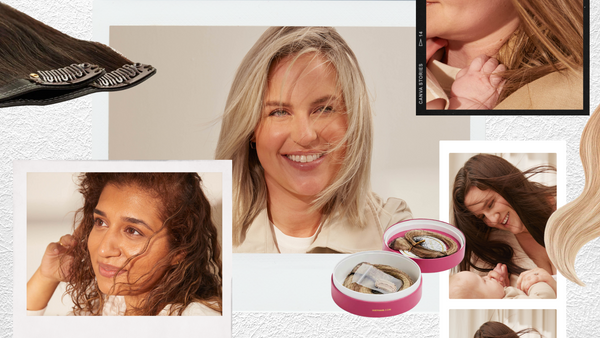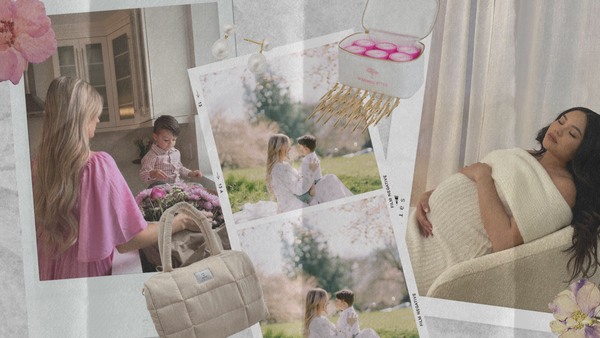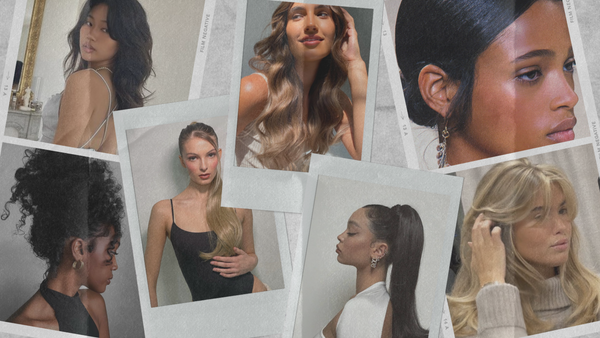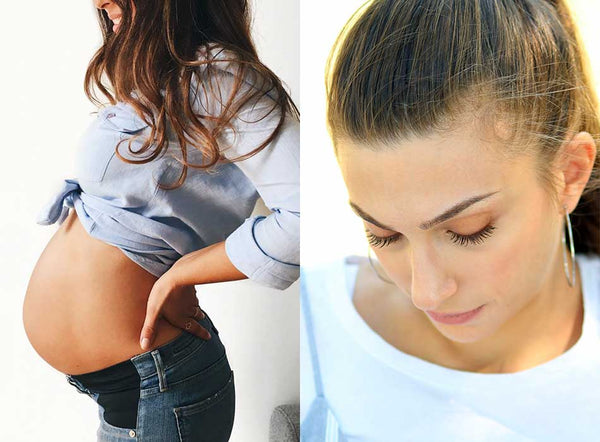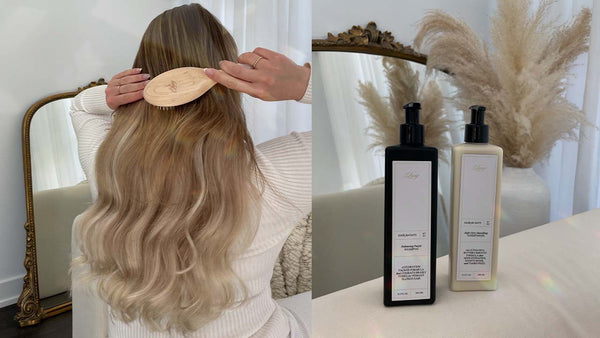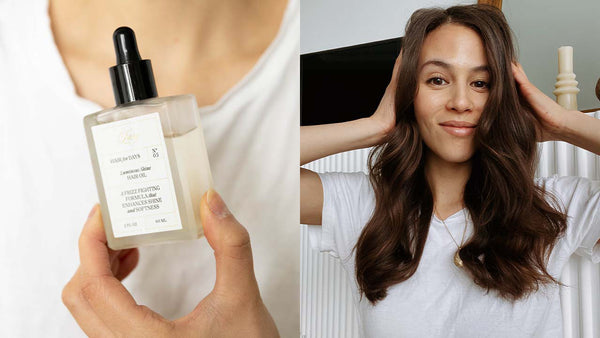We’ve heard them all, strange but said to be true hair care solutions to make hair longer, thicker, and shinier. But with so many tools, products, and online tutorials out there, it’s time to separate hair myths from hair facts.
If you find yourself face-palming for falling for some of the hair myths below, don’t worry, you’re not alone. Who hasn’t cut their hair in hopes of sparking healthier growth? The fact is, so many of these so-called hair solutions have been around so long, passed down through generations of women, they’ve essentially become a game of hair care broken telephone.
To help you achieve your best, healthiest hair ever, we’ve uncovered and debunked the 10 most common hair care myths below with a few tips and tricks on what actually works.
Myth #1: Cutting your hair more often makes it grow faster

Probably the biggest hair myth out there, debunked simply by looking at the science of hair. Hair grows from the follicles found in the scalp, therefore cutting hair strands has nothing to do with the root from which they grow. Hair follicles are also linked to genetics and while there have been some tests and studies around products and solutions said to help grow or improve follicle count, cutting or trimming the hair often does nothing for hair growth. When looking for a simple, stylish way to add length, consider hair extensions, as this also allows you to play with your look by adding length when you want it.
Myth #2: You should brush your hair 100 times per day

Honestly, who has time for this? The belief behind this theory is true: Brushing your hair helps distribute its natural oils. However, 100 strokes is excessive and unnecessary. In fact, brushing your hair too often, with too much force or with a poorly-designed hairbrush can cause breakage, cuticle damage, and can also make your hair look and feel frizzy.
Brush your hair enough to smooth out tangles and knots; when a brush can go through seamlessly, you’ve likely hit the right amount of strokes for your mane. Brushing your hair helps to distribute natural oils from root to scalp giving your hair a natural shine, it can also help stimulate the scalp, but be sure to use a brush with soft bristles, or a wide tooth comb. Some experts also recommend brushing the hair when wet in the shower for smoother, frizz-free hair.
Myth #3: Wash with cold water for ultimate shine

While in skincare, a splash or rinse with cold water is said to help close the pores after a treatment, the science doesn’t exactly work the same way with hair. There’s no solid proof that washing your hair with cold water actually makes a difference than washing with warm, or even hot water. Experts, however, do recommend aiming the showerhead or spray of water away from the scalp and more towards the mid-shaft of the hair. Especially when conditioning, this preserves more of the product in the hair and scalp and saves the scalp from harsh pressure. No more hopping around in discomfort or cutting your cold shower short for the sake of shine.
Myth #4: Wash your hair every day cus’ the more product the better

While most women now know a full wash and conditioner really isn’t necessary, some still pile on the product when it is wash day. A full shampoo and conditioner should be done 2-3 times a week, depending of course on your hair type or lifestyle. This is enough to clean the hair and nourish the scalp. However, when it’s hair wash day, don’t go crazy with the product. Wash, lather, rinse, and repeat may actually cause damage, breakage, and depending on the product may harm or dehydrate the scalp. A dollop of shampoo and conditioner is usually enough for most people and repeating the process doesn’t necessarily bring about better hair. Ensure you thoroughly rinse and massage the scalp during the wash as this does, in fact, help stimulate the follicles.
Myth #5: Dry shampoo is just as good as regular shampoo

Yes, we just said don’t wash your hair every day. And yes, dry shampoo is a savior in a pinch between wash days – but it is in no way a replacement for regular water, shampoo and conditioner. Dry shampoo simply soaks up excess oil and grease from the hair and some products even add a nice scent, but that’s all it does. We’re all looking to save some time, but don’t cut corners when it comes to washing your hair, make it part of your self-care routine.
Myth #6: Do not condition if you have oily or thin hair

False and false. Oily hair is caused by an excess of sebum in the scalp and thin hair can be attributed to genes or sometimes, previous damage. Not conditioning your hair whether it’s greasy or thinner than average is only doing your natural crown a disservice, and you should truly be treating your hair royally. First, it’s best to find and use and conditioner that treats the scalp and your hair. For greasy hair, also look for a clarifying conditioner and focus application on the mid-shaft to the ends. For thinning hair, look for volumizing conditioners, but especially one that will hydrate and nourish the scalp to help with growth and a more fuller look.
Myth #7: Using the same shampoo and conditioner over and over will eventually lose its effectiveness

Finding the right shampoo and conditioner can be tricky and result in a few trial and errors. However, when you find a combination of products that work, there is no proof that your hair will somehow assimilate to the benefits and the products will stop working. Stick with what works, but don’t be afraid to switch it up. There are so many products out there, offering greener ingredients or ew technologies, and sometimes the trial and error process can be fun when you want to switch it up.
Myth #8: Plucking grey hairs make two more grow in its place

While it may seem like when you find one pesky grey and pluck it, a ton more show up, experts (and science) say plucking the grey hairs is not the cause for their multiplication. Plucking a grey hair can actually cause damage to the hair follicle which may stunt or hinder any hair growth. Also, one hair strand grows from one follicle, so it is not possible for multiple hairs (no matter what color) to pop up instead of a single one. Grey or white hairs occur when the pigment in the follicles dies, which is mostly a genetic occurrence. Snipping the grey hair instead of plucking can help temporarily, as does a quick root dye job, but to really keep your hair healthy, embrace the greys and let them be. A fun way to play with color and cover greys is to consider hair extensions in similar tones to your hair. Many high-quality extensions like Luxy Hair extensions also come in a variety of styles that will let you play with highlights, balayage, and offer coverage or a little camouflage for stubborn greys.
Myth #9: Split ends can be repaired

Despite what some products advertise, split ends cannot be repaired. A split or damaged end occurs when the protective outer layer (cuticle) of the hair is damaged, so there really is no way to reseal or close it. While many women would love to believe a conditioner or serum is the answer in order to preserve length, the only way to get rid of split ends is to split with them – they need the chop. Cutting or trimming split ends will give the hair a healthier fuller look, which will make up for any length lost.
Myth #10: Sleeping with hair down or loose helps it grow

While the long, flowing look of Sleeping Beauty may conjure fairy tales of longer, fuller hair for yourself, we are sorry to say this hair care tip is definitely one of fiction. Tying or wrapping your hair up before sleeping actually helps prevent breakage or damage, however, you don’t want a super tight or uncomfortable bun or ponytail. Tie your hair enough so it holds together but doesn’t pull at the scalp. Sometimes a bit of leave-in conditioner can help to repair the hair and give it extra softness and shine for the next day.
If any or all of these myths sounded way too familiar, it’s time to put the old wives’ tales to rest and move forward with better hair care tips that actually work. Every hair texture and type will require certain tweaks to hair care regimens, but the foundations of hair care are true for everyone—it’s not just about hair. The scalp is such a vital part of strong, shiny, fuller hair.
Remember, sharing is caring, next time you hear a girlfriend or a seatmate at the salon repeating these tired myths, don’t be afraid to share your knowledge.
Have you heard of any other hair care myths? Is there on you swear by, despite your better judgement? Let us know in the comments below!
Written by: Rosalyn Solomon


